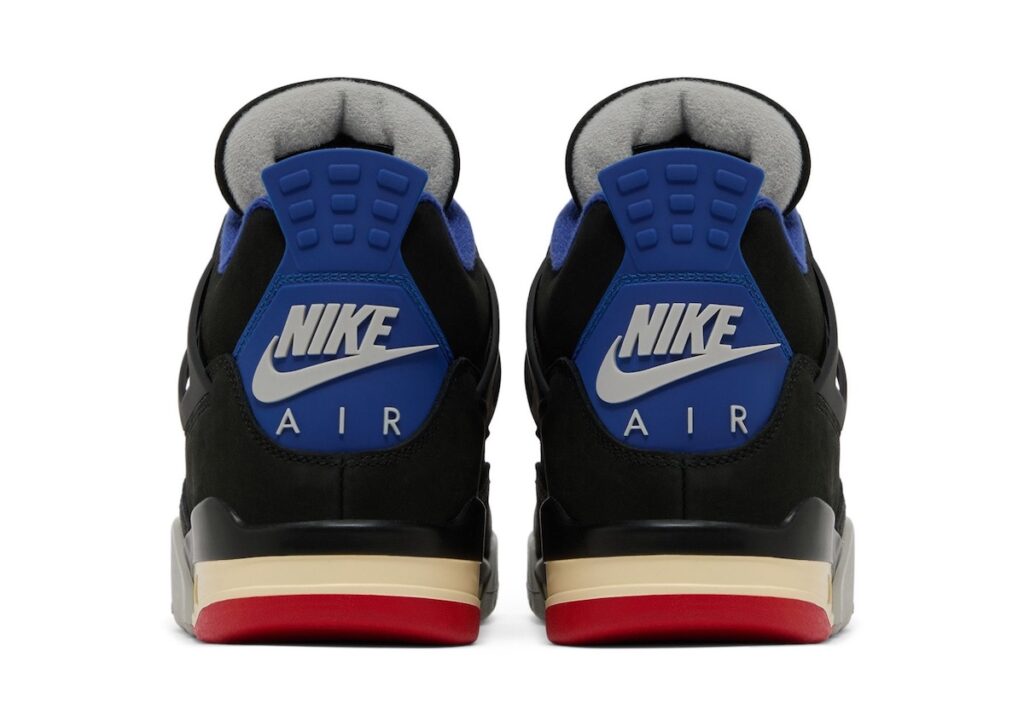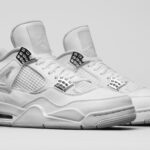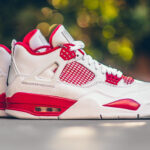Okay, here is the blog post draft:
“`html
Air Jordan 4 Rare Air: Price Check & Smart Buyer’s Guide
Catching a Classic: Understanding the Air Jordan 4 Rare Air
The Air Jordan 4 ‘Rare Air’ was a series of releases that reimagined the classic silhouette with unique colorways and materials, often featuring laser-etched details or removable patches. Finding the best price for sought-after sneakers like the Air Jordan 4 ‘Rare Air’ requires careful comparison across different platforms, as prices can vary significantly.
Where to Buy: Retail Reality
Originally, the Air Jordan 4 “Rare Air” colorways would have been available through official Nike retailers and select sneaker boutiques. However, as these are older, often limited releases, they are no longer available at standard retail prices. You won’t find them sitting on shelves at your local Foot Locker or on Nike.com for their initial price.
The Resale Game: What to Expect for Air Jordan 4 Rare Air
The resale market is where you’ll primarily find the Air Jordan 4 “Rare Air” today. Prices here fluctuate based on several factors:
- Specific Colorway: Some “Rare Air” versions are more sought-after than others. For example, the “Laser” editions (like the “Black Laser Gum” or “Laser Orange”) or unique sample colorways might command higher prices.
- Condition: Deadstock (DS – brand new, unworn, with original box) pairs will always be the most expensive. Used pairs vary greatly depending on wear and tear.
- Size: Common sizes might have more availability but also high demand. Very small or very large sizes can sometimes be pricier due to scarcity.
- Platform:
- StockX: Prices for various Air Jordan 4 “Rare Air” models, such as the “Laser Black Gum,” can range from approximately $250 to over $500+ depending on the specific shoe, size, and condition. Always check live bids and asks for the most current pricing. Other “Rare Air” versions like the “Tour Yellow” (often dubbed “Rare Air Lemon Venom”) can see prices in the $300-$600+ range.
- GOAT: Similar to StockX, GOAT offers new and used pairs. Expect prices in a similar ballpark, perhaps slightly higher for authenticated used pairs. For example, a “Laser Black Gum” could be listed from $280 to $550+, while a “Tour Yellow” might be $320-$650+.
- eBay: You might find a wider range of prices here, from lower deals on used pairs to premium prices for pristine collector’s items. Be extra cautious with authentication. Prices could be anywhere from $200 (for well-used) to $600+ (for DS or rare editions).
- Hype and Rarity: Limited production runs or special features (like laser etching) significantly impact resale value.
Scoring a Deal: Smart Shopping Tips
Want to snag a pair without overpaying? Here’s how:
- Compare Across Platforms: Don’t just check one site. Prices can differ.
- Set Alerts: Many resale sites let you set price alerts for specific shoes and sizes.
- Be Patient: Prices can dip, especially after initial hype for a similar, newer release. If you’re not in a rush, waiting can pay off.
- Consider “Used” or “Very Near Deadstock” (VNDS): Gently used pairs can offer significant savings. Ensure the seller is reputable and provides clear, detailed photos.
- Follow Sneaker News & Communities: Sometimes, discussions in forums or social media can point to sellers or unexpected deals.
- Beware of “Too Good to Be True”: If a price is drastically lower than market average, it might be a scam or a fake.
- Buy from Reputable Sellers: Check seller ratings and reviews, especially on platforms like eBay. Platforms like StockX and GOAT have their own authentication processes.
Spotting Fakes: Protecting Your Purchase
The Air Jordan 4 is heavily counterfeited. Here are key things to check to ensure you’re getting an authentic pair:
- Box and Label: The box quality should be high, and the label details (font, SKU, color code, size) must match official releases and the shoe itself. Look for crisp printing.
- Stitching: Authentic Jordans have neat, consistent, and high-quality stitching. Messy, frayed, or uneven stitching is a major red flag.
- Shape and Silhouette: Familiarize yourself with the AJ4’s unique shape. Fakes often get the toe box shape (not too bulky, not too slim), heel height, or overall proportions wrong. Compare with official images from Nike or trusted sneaker sites.
- Materials: Real Jordans use premium materials. Leather should feel and smell like genuine leather, not cheap plastic. The mesh netting on the sides and tongue should be sturdy. Plastic components (like the wing eyelets and heel tab) shouldn’t feel flimsy or cheap.
- Tongue Tag: The Jumpman logo and “Flight” script on the tongue tag should be crisp and well-defined. Look for sloppy embroidery, incorrect font, or poor spacing. The proportions of the Jumpman are often incorrect on fakes.
- Heel Tab: The Jumpman logo or “Nike Air” (depending on the specific Rare Air release and if it’s a retro of an OG style) on the heel should be well-placed, cleanly molded/stitched, and have correct proportions.
- Insole Details: Check the logo print on the insole (it shouldn’t rub off too easily) and the stitching underneath if possible (though harder to verify without damage).
- The “Smell Test”: Authentic Nikes have a distinct factory smell from their materials and adhesives. Fakes often have a strong, overpowering chemical or glue odor due to cheaper materials.
- Price: Again, an unusually low price for a “Rare Air” model is a major warning sign for a counterfeit.
- Source: Stick to trusted resale platforms that offer authentication (like StockX and GOAT) or highly-rated individual sellers with a long history of positive feedback if using sites like eBay.
Final Thoughts
Getting Air Jordan 4 Rare Air shoes means you have to look online. They are not in normal stores anymore. The prices for these shoes can change a lot. It depends on the shoe’s color, if it’s brand new or used, and where you try to buy it. You should look at websites like StockX or GOAT. It’s very important to make sure you buy real shoes, not fake ones. Always check pictures and try to buy from sellers people trust. If you look carefully and are patient, you might find a really cool pair for a good price!
“`



